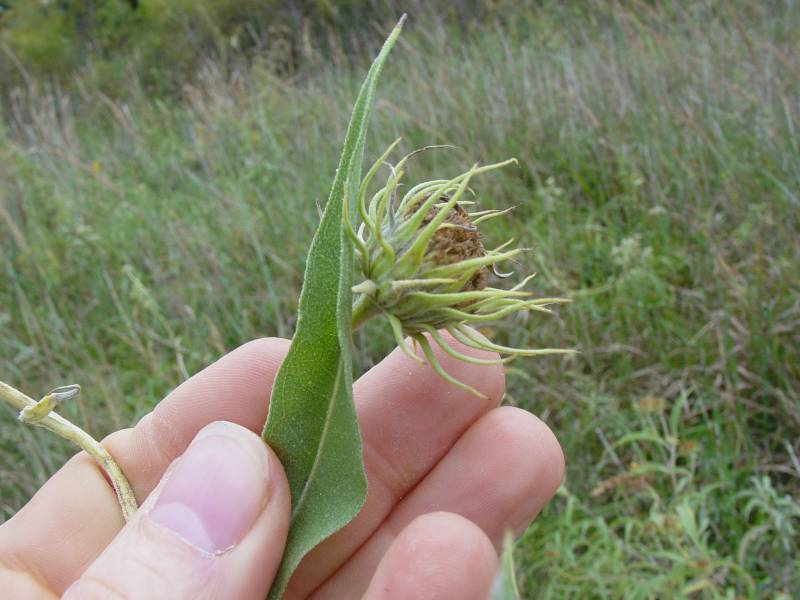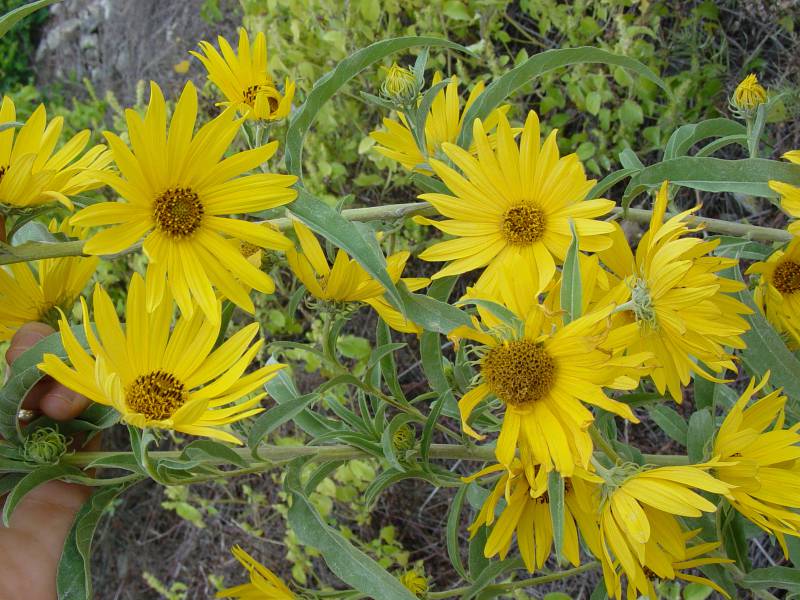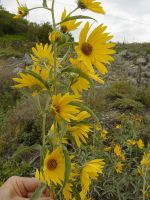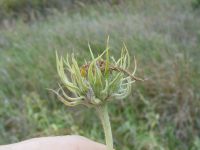Distribution: Introduced from east of the Rockies to British Columbia, Idaho, and eastern Washington.
Habitat: Dry, open places, often on waste ground.
Flowers: July-September
Origin: Introduced
Growth Duration: Perennial
Conservation Status: Not of concern
Pollination: Bumblebees, bees, butterflies, wasps
Perennial with crown buds, short rhizomes, and fleshy roots, the stem 0.5-3 m. tall, pubescent upwards with short, white, appressed hairs.
Leaves lanceolate, acuminate, narrowed to a short, winged petiole, 7-15 cm. long and 1-3 cm. wide, entire or occasionally toothed, pinnately veined, strongly scabrous on both sides; leaves mostly opposite, but upper leaves usually alternate.
Heads usually several, the disk 1.5-2.5 cm. wide, yellow, the flowers perfect; involucre bracts narrow, firm, attenuate, exceeding the disk, grayish with short hairs; rays 10-25, yellow, neutral, 1.5-4 cm. long; receptacle chaffy throughout; pappus of 2 awns.
Heads usually several, the disk 1.5-2.5 cm. wide, yellow, the flowers perfect; involucre bracts narrow, firm, attenuate, exceeding the disk, grayish with short hairs; rays 10-25, yellow, neutral, 1.5-4 cm. long; receptacle chaffy throughout; pappus of 2 awns.
Publication: Index Seminum (Göttingen). 1834: unpaged. 1835. 1835.
PNW Herbaria: Specimen records of Helianthus maximiliani in the Consortium of Pacific Northwest Herbaria database
WA Flora Checklist: Helianthus maximiliani checklist entry
OregonFlora: Helianthus maximiliani information
E-Flora BC: Helianthus maximiliani atlas page
CalPhotos: Helianthus maximiliani photos







